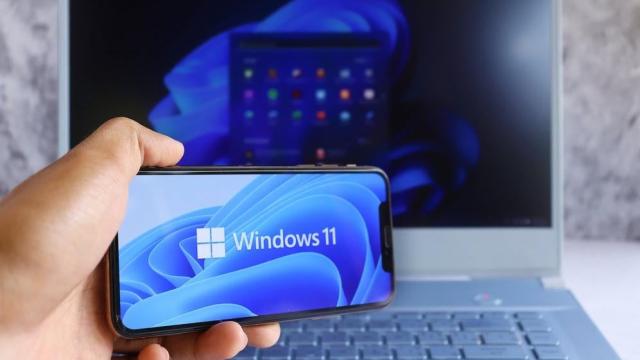Windows 11 can run Android apps as if they’re native PC software, but only a handful are officially supported at the time of this writing. However, there’s a way to sideload unsupported apps to Windows 11, similar to how you can install third-party apps on your Android phone.
You’ll need a few things to pull this off. First, you’ll need to be in the Windows 11 Insider Program and have the Windows Subsystem for Android app installed. You can find out more information about joining the beta from Microsoft’s announcement blogpost.
Second, you’ll need to install Android Debug Bridge (ADB) on your PC. We have a guide for installing ADB on Windows 10, and the process carries over to Windows 11.
Third, you need the APK files for the apps you want to install. You can find these from trusted sources like APK Mirror, APKPure, F-Droid, Github, or the XDA Developer forums. Just make sure you download legitimate files (meaning non-pirated) from websites you know are safe. Bootleg APKs can be riddled with malware or hosted on unsafe domains, and downloading pirated software is, y’know, illegal.
Finally, you may also need to sideload the MicroG APK in order to use apps that check for Google Play Services verification. MicroG is open-source software that essentially replicates Google’s services so you can use apps on otherwise unsupported devices. This is an optional step, and you’ll have to install MicroG using the steps below, but it’s necessary if you want to run any Google apps or apps that depend on Play Store verification.
With those prereqs out of the way, let’s get those apps sideloaded. It may look complicated at first glance, but it’s pretty quick to pull off once you know the process.
- To start, open the Windows Subsystem for Android from the Windows 11 Start menu under the “All Apps” section.
- In the Windows Subsystem for Android setting window, find and turn on “Developer Mode.”
- Open the “Files” window at the top of the settings menu to open Android on your PC.
- Back in the settings menu, scroll down and click “Refresh” next to the IP Address option (it’s right beneath the Developer mode toggle). Once the IP Address appears, click “Copy.”
- Next, open Windows Terminal as an admin. Go to Start Menu > All Apps. Hover your mouse cursor over “Windows Terminal” then select More > Run as administrator.
- In the Windows Terminal window, type the command
adb connect (IP address)using the IP address from steps 4 and 5. It should look likeadb connect 1234.5.6.7 - Press Enter to run the command. If everything worked, you should see “connected to [IP address].” We can now sideload APK files saved on your computer to run on Windows Subsystem for Android.
- Back in the Windows Terminal window, type the command
adb installfollowed by the folder pathway and filename in quotation marks. For example, the full command may look likeadb install “C:com.whatsapp_2.21.21.15-212115005_minAPI16(x86_64)(nodpi)_apkmirror.com” - If everything is correct, you’ll see “Performing Streamed Install” in Windows Terminal once the installation is started, and “Success” once it’s complete.
And that’s it. The app is now installed on your PC. Like other Android apps, you can run sideloaded apps from the Windows 11 Start Menu. They will be listed under “all apps.” Double click to run the app and it will open in its own app window.
If for some reason the app isn’t working, try installing MicroG as recommended above. Or, you can try running the app through an Android emulator on Windows instead.

Leave a Reply
You must be logged in to post a comment.